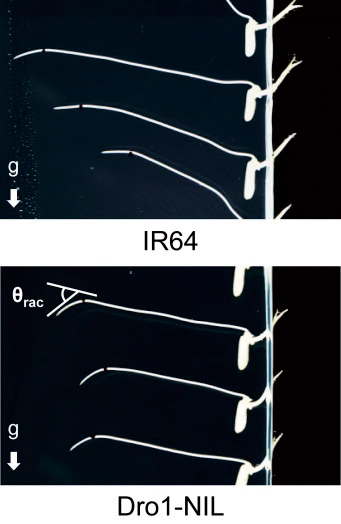| Fig.1. Effect of DRO1 on root gravitropic curvature. Gravitropic curvature in seminal roots of IR64 and Dro1-NIL at 4 h after rotation from the original vertical axis. θrac, root angle of curvature after rotation. Arrows indicate the direction of gravitational force. |
Fig.2. Characterization of the genotype and vertical root distribution of IR64 and Dro1-NIL. (A) Graphical genotype with the homozygous regions from IR64 represented by blue bars and the homozygous region from KP indicated in red. (B) Roots of each line were obtained from an upland field using a monolith sampler (30 cm × 30 cm × 5 cm). |


